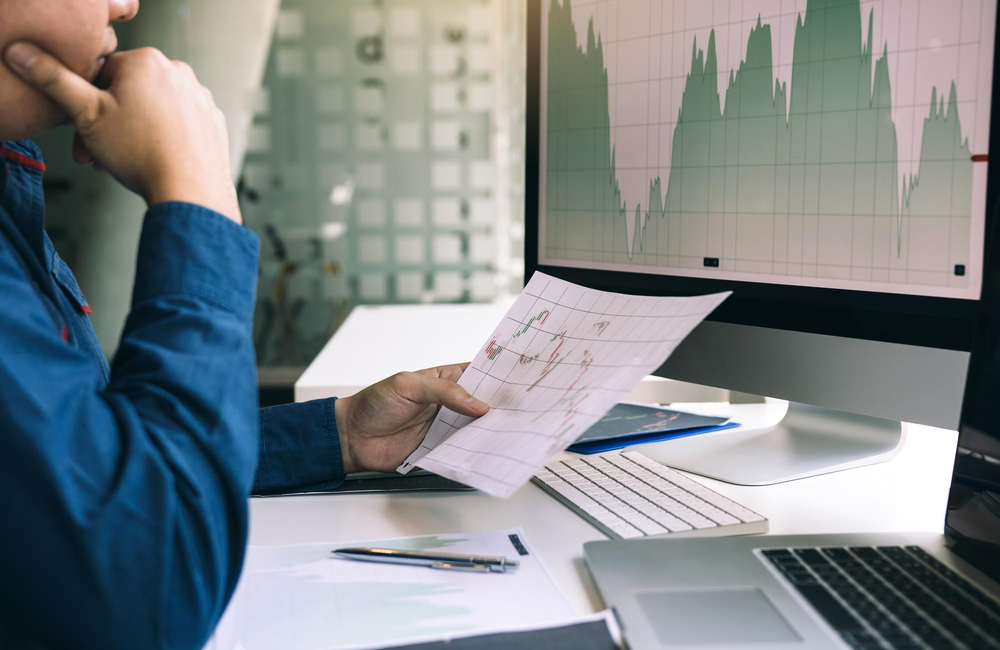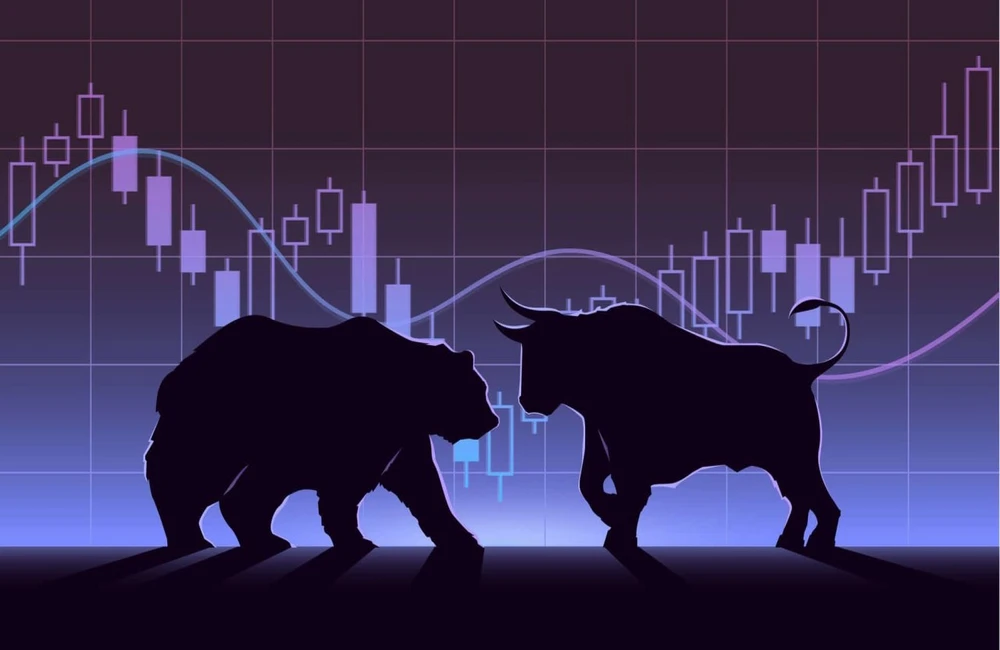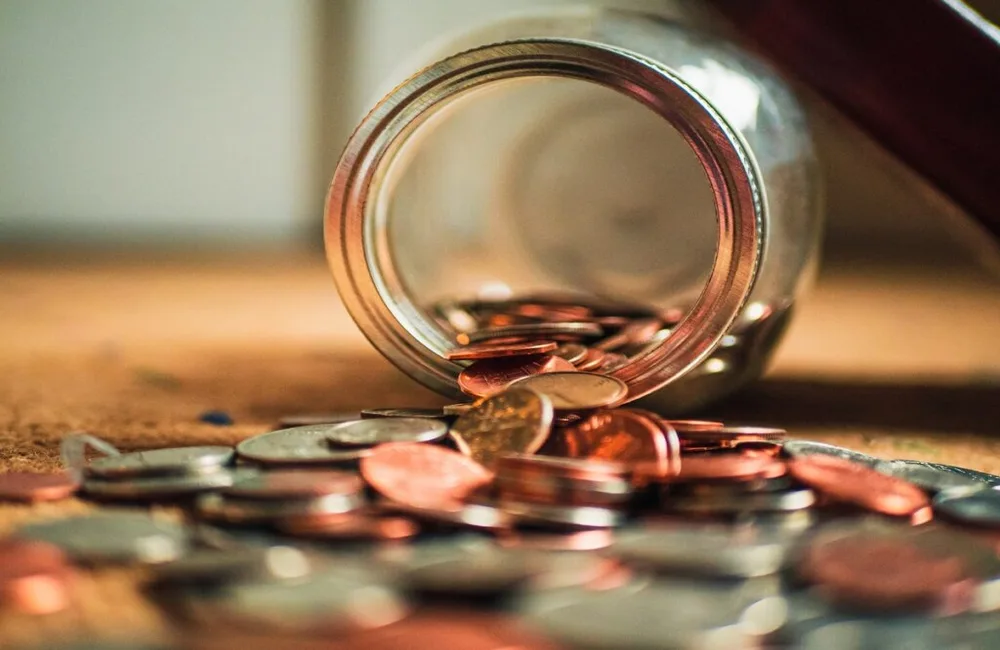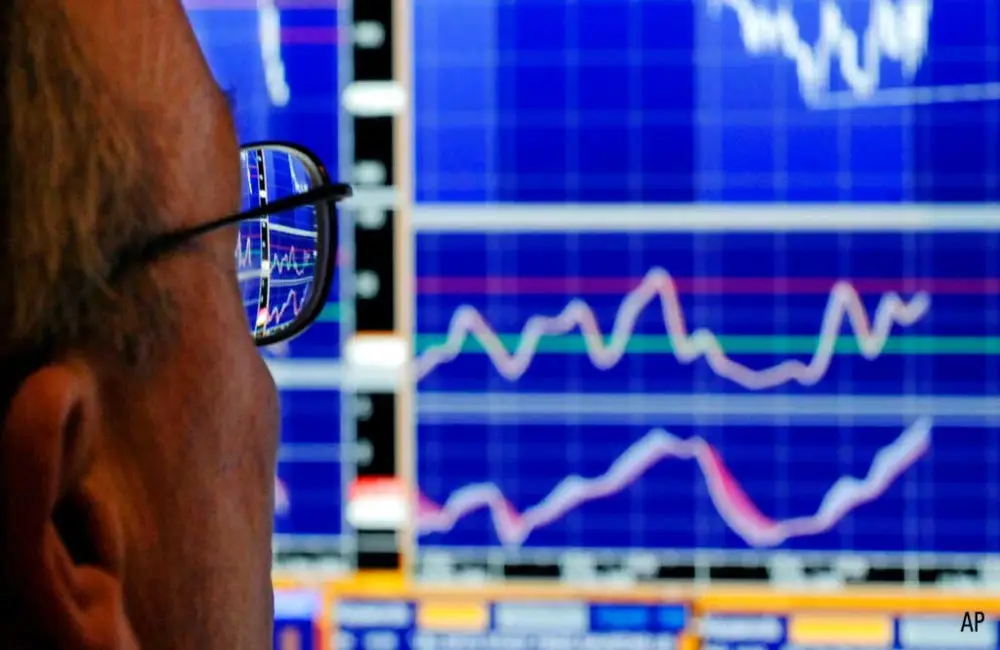ASX futures jumped 82 points or 1.2 per cent to 7026 around 8.00 am AEST, signalling a positive opening for trading.
In one of the wildest trading sessions in recent memory, the S&P 500 finished 1.5 percent higher, having been down as much as 2.6 percent earlier in the day. The Dow Jones Industrial Average gained roughly 90 points, or 0.3%. The Nasdaq rocked back and forth before closing up 3.3 percent after plunging more than 3 percent early in the day.
The Cboe Volatility Index, Wall Street’s “fear gauge,” surged to its highest level in more than 15 months.
US indexes were higher after President Biden spoke Thursday afternoon, announcing new sanctions on Russian elites and banks. Russian President Vladimir Putin’s “aggression in Ukraine ultimately will cost Russia dearly, economically and strategically,” Mr. Biden said.
Some investors are wagering that the Federal Reserve won’t be as aggressive in fighting inflation amid the increased tensions, which will help make the valuations of growth companies more palatable.
“That makes people more comfortable doing more growth stocks,” said Gary Black, the manager of the Future Fund Active exchange-traded fund. Mr. Black owns Alphabet and Palo Alto Networks, which gained 2% and 12%, respectively.
European markets finished in the red. The pan-continental Stoxx Europe 600 slid 3.3 percent and London’s FTSE 100 index tumbled 3.8 percent. Russia’s MOEX index had fallen nearly a third.
The S&P/ASX 200 ended 3.0% lower at 6990.6 yesterday, with Russian troops flooding into Ukraine and sending global equities crashing. Every sector ended lower, with losses picking up pace as the day progressed and dragging the benchmark to its biggest one-day percentage loss since September 2020. Around 80% of ASX 200 member stocks were in the red.
The tech sector bore the most of the brunt, shedding 6.4%. Life360 and Appen both experienced their biggest one-day losses on record, shedding 29%.
Commonwealth Bank (CBA), Westpac (WBC.AX), NAB and ANZ tumbled between 2.05% and 3.4%, dragging down the heavyweight financial sector 2.8%.
The energy sector fell 1.8%, even with Brent Crude breaking above $100/bbl for the first time since 2014.
In Hong Kong, the Hang Seng Index fell more than 3%. Japan’s Nikkei Stock Average ended at its lowest level since November 2020.
In commodities, gold futures fell 0.4% to $US 1901.90; Brent crude added 2% to $US99. Metals: LME copper eased from above US$100 touched earlier in session /iron ore down 0.7% at US$139.50.
In bond markets a scramble for safety overnight sent yields tumbling before they recovered losses as the US trading day wore on. The yield on the 10-year Australian bond dropped to 2.15%. Yields on the US 10-Year Treasury note previously dropped to 1.96%. Yields fall when prices rise.
The Aussie was buying 71.66 US cents at 7.00 am AEST, a fall from the last close of 72.32. The WSJ Dollar Index, which measures the US dollar against 16 other currencies, climbed to 90.38.
Asia
Asian markets finished gloomily, as Chinese shares sank sharply, following a broad selloff in Asian equities after Russian President Putin earlier in the day said he had taken military actions in a region of Ukraine. The benchmark Shanghai Composite Index sank 1.7% and the Shenzhen Composite Index dropped 2.4%. The ChiNext Price Index reversed big gains, to finish down 2.1%. And even though oil companies and the providers of related services soared, those gains were more than offset by sharp losses in most other sectors, especially companies selling to consumers like cinema operators and home-appliance maker.
In Hong Kong, shares tumbled to a broad regional selloff after Russia initiated military action in Ukraine. All sectors but energy finished lower, with tech stocks among the biggest laggards. Alibaba Group (9988.HK), set to report quarterly results later today, dropped 6.7% to a fresh closing low. JD.com lost 4.8% and Tencent Holdings was down 3.9%. Hong Kong Exchanges fell 5.4% after its full-year results. Chinese oil majors rose on firm crude prices above $100 a barrel, with shares of PetroChina up 3.4%, Cnooc 1.0% higher and gas supplier ENN Energy up 2.9%. The Hang Seng Index fell 3.2 percent, its largest one-day percentage drop since September 2021.
Japan’s Nikkei Stock Average dropped 1.8% to its lowest level since November 2020 after Russian President Putin announced a military operation in Ukraine. Losses on the Nikkei were broad-based as SoftBank Group fell 6.8%, AGC Inc 6.1% lower and Disco Corp.
Japan stocks dipped but not too much after Russia struck Ukraine because market players still see it as a limited war and don’t expect it to set off direct confrontation involving U.S. and Russian militaries, says Takahiro Sekido, a strategist at MUFG Bank.
Europe
European stocks tumbled in end-of-session trading after Russia invaded Ukraine in the early hours of the morning, sending global equity markets into a sharp decline. The pan-European Stoxx 600 declined by 3.3%.
“Markets pulled the rug from under their feet with the escalation of tensions caused by the Russian action, as the environment already looked brittle following concerns over rising inflation and interest rates,” says head of markets Interactive Investor.
In London, the FTSE 100 fell 3.8%. The biggest fallers in the index were Russian miners Polymetal International PLC and Evraz PLC, which both plummeted over 30%, but Brent crude oil prices surged above $100 for the first time since 2014 as investors flocked to the perceived safety of oil, gold and US dollar.
“Although the EU and the US have promised to retaliate with additional sanctions, that is highly unlikely to change Putin’s calculus because the nuclear option of cutting Russia from energy markets and Swift hasn’t crossed the table yet,” says CMC Markets UK.
North America
US markets swung Thursday, soaring in response to news of new sanctions against Russia after its missiles and airstrikes struck dozens of cities across Ukraine.
The Dow Jones Industrial Average gained roughly 90 points, or 0.3%. The S&P 500, which fell into correction territory earlier in the week, gained 1.5 percent. The Nasdaq, which had been down more than 3% earlier, gained 3.3%. The Cboe Volatility Index spiked to its highest level in more than 15 months.
U.S. indexes gained as President Biden gave a Thursday afternoon address in which he unveiled new sanctions on Russian elites and banks. Needless to say, Russian President Vladimir Putin’s “aggression in Ukraine will end up costing Russia dearly, economically and strategically,” Mr. Biden said.
The invasion has added pressure to a global economy that was already buckling under the weight of snarled supply chains and some of the highest inflation in years, with Europe most likely to be economically punished.
Amid high inflation, expectations of interest-rate hikes and war in Europe, Fiona Cincotta, senior financial markets analyst at City Index, said: "It just seems like there's too much for investors to be able to digest right now."
Gold and US Treasury bonds, both of which tend to rally in times of stress, gained earlier before giving up some ground. The front month gold futures were lately up $11.10 a troy ounce, or 0.6%, at $1,920.30. The yield on the benchmark 10-year US Treasury was at 1.976%, matching Wednesday’s close.
The dollar rose, with the WSJ Dollar Index climbing 0.8%. Haven currencies, like the Japanese yen, also strengthened, Bitcoin rose 4.1% on the past 24 hours to $39,061, according to CoinDesk.
Brent crude oil, the global standard, had risen above $100 a barrel for the first time since 2014, but the April contract dipped slightly to $99.01.
Futures for natural gas in Europe soared 50% and benchmark prices for aluminium and nickel, which Russia produces in large quantities, hit their highest levels in roughly a decade. Futures for wheat and corn rose to multi-year highs, as Russia and Ukraine are both big makers of grains.
Ukraine’s foreign-exchange market, in a statement from its central bank, said it suspended operations as part of martial law measures. The country’s stock exchange also announced it was suspending activity.
“We haven’t had serious military conflict in Europe for a long time, so there’s no playbook for this one,” said Gregory Perdon, chief investment officer at Arbuthnot Latham.
Weekly US jobless claims were 232,000, down from the prior week and matching analysts’ expectations against a tight labor market.
Energy stocks rose while bank stocks worldwide were decimated. Shares of defense stocks soared, with BAE Systems up 6.6% and Northrop Grumman up 1.9%.
Some tech and growth stocks climbed Thursday, while some meme stocks did, too. Others are wagering that the Federal Reserve won’t be as aggressive in fighting inflation during the heightened tensions, which will justify the valuations of growth companies.
“That makes people more comfortable buying growth stocks,” said Gary Black, who manages the Future Fund Active exchange-traded fund. Mr. Black has been buying Alphabet and Palo Alto Networks, stocks that gained 2% and 12%, respectively.
Earnings are also due after the markets close for Beyond Meat, Etsy and the cryptocurrency exchange Coinbase.
The stress in course for the market is forcing investors to build up buffers in cash, added Florian Ielpo, head of macro at Lombard Odier Investment Managers. Company multi asset funds are sitting on the highest level of cash since the market crash of March 2020.
The Russian attack also arrived as markets are already on edge with impending changes to Federal Reserve monetary policy.
It is no more than a run-of-the-mill raise 0.25 percentage points at the Fed’s meeting next month, as opposed to a hurtling 0.5 percentage points. As of Thursday, market pricing indicated the odds of a larger rate hike slipped to 17% from 34% a day earlier, according to CME Group data.
“We may get past the geopolitical situation but the market is going to remain focused on what the Fed intends to do with rates as we continue to see rates higher,” said Lindsey Bell, Ally’s chief markets and money strategist.
























